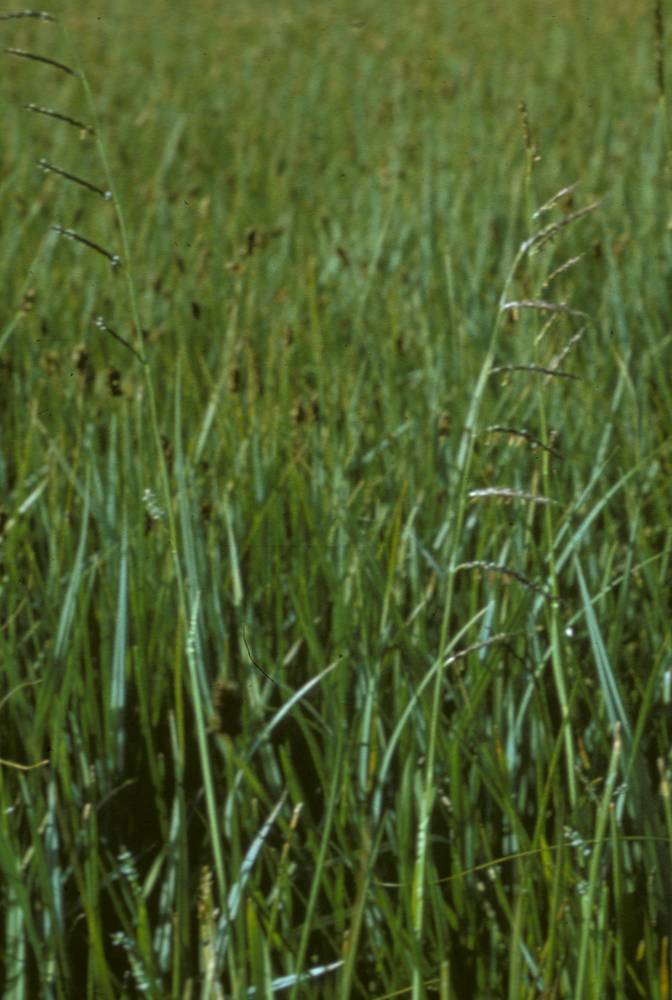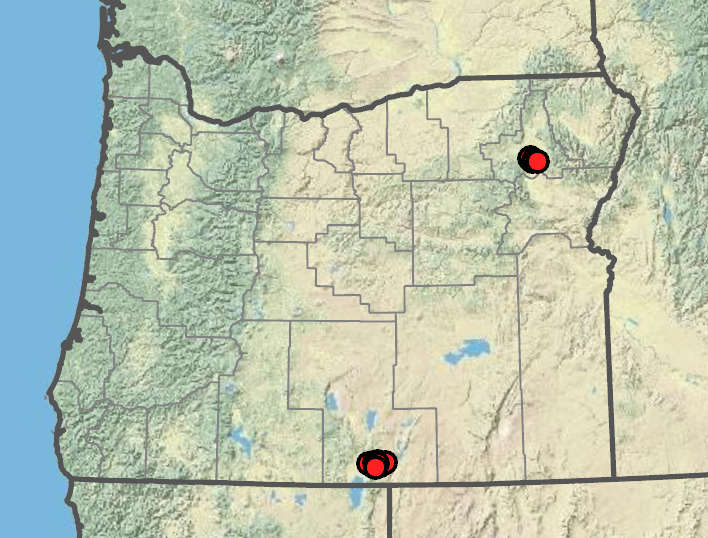Pleuropogon hooverianus
Pleuropogon oregonus
Oregon semaphoregrass
sheaths glabrous or minutely scabrous;
blades flat, 5–17 cm × 4–9 mm, glabrous or scabrous over the veins;
tips with short points or with awns to 4.5 mm; uppermost culm blades 1.5–7 cm.
racemes 13–20 cm × 10–33 mm, 6–7 spikelets that are ascending to erect at maturity.
20–40(50)mm, 7–14 florets, ascending; lower florets bisexual; upper florets pistillate; terminal floret usually sterile.
lanceolate to ovate; acute; erose;
lower glumes 2–3 mm;
upper glumes 2.5–4.5 mm.
2.5–3 mm.
4.5– 7 mm, 7-veined;
tips truncate; awns 5–12 mm.
keels each with an awn 3–9 mm, arising 33–50% above the base.
approximately 4 mm.
Pleuropogon hooverianus
Pleuropogon oregonus
Wet meadows, stream banks. 900–1700m. BR, BW, ECas. Native.
From the long spikelets to awned palea keels and often awned leaf tips, Pleuropogon oregonus is an odd grass. The only similar Oregon species is P. refractus, which has dangling spikelets, paleas with triangular appendages, and reduced flag leaves. Pleuropogon oregonus is endemic to Oregon and is known from only two populations.
Barbara Wilson, Richard Brainerd, Nick Otting



